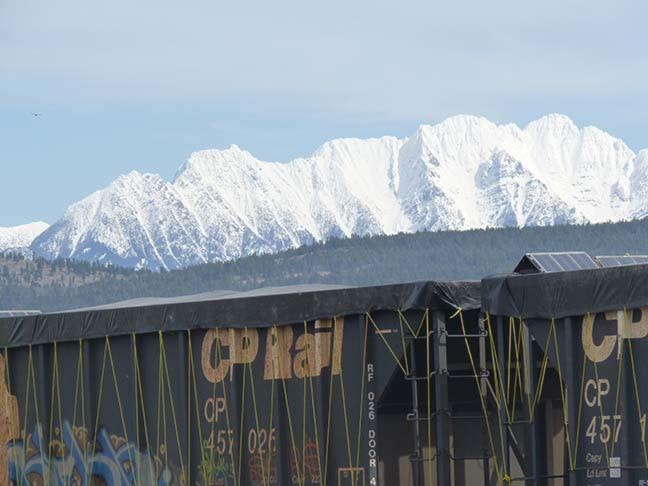Concerned with rail safety in the community, Cranbrook city council held a special meeting with Canadian Pacific on Wednesday, October 23.
Council asked Canadian Pacific (CP) to meet with them after hearing in August that the rail company had laid off four train car safety inspectors in Cranbrook, a month after the Lac-Megantic railway tragedy.
Mayor Wayne Stetski thanked CP for its long-standing history in Cranbrook.
"I want to start by recognizing that CP Rail has been an important part of Cranbrook for 115 years now. You are an important part of our economy and certainly your employees are an important part of our community," he said.
But the news that more than half of CP’s railway carmen in Cranbrook had been laid off raised concerns, he went on.
“The concern from the community, given what happened in Quebec, was how does that leave Cranbrook in a safe position?” Stetski asked.
“It’s still in a safe position, there is no question about it,” responded Rick Poznikoff, CP’s senior manager of community relations and aboriginal affairs.
“Staff reductions are predicated on levels of traffic and numbers of traffic.
“The number one priority is safety. We are not compromising safety here. But in this case, these cars will be inspected either in Golden, Lethbridge and Cranbrook, and Trail.”
The mayor asked for clarification: does that mean that rail traffic has decreased through Cranbrook?
“No decrease,” Poznikoff said. “But some of them go straight through to another destination. They are not switched here.”
Far fewer trains are broken apart and made up again in Cranbrook than used to be, he explained. Less frequent switching of rail cars means fewer inspections.
Councillor Gerry Warner asked how the Lac-Megantic tragedy happened given all of the rail industry’s safety precautions, including manual hand brakes on each rail car.
“We would like to know what happened too,” said Poznikoff. “We are very curious. We are just as concerned. Unfortunately, we have to wait until the Transportation Safety Board does an investigation and comes out with a report.”
Poznikoff did a lot to alleviate council’s concerns about rail safety in Cranbrook.
He pointed out that 99.998 percent of rail industry shipments considered hazardous commodities reach their destination without a train accident. Rail hazardous commodity accident rates are down 91 percent since 1980 and 38 percent since 2000.
Poznikoff went over CP’s procedures for checking rail lines and rail cars throughout its network.
About once a year in the area, a Rail Flaw Detector Car inspects the main track at regular intervals and uses an ultrasonic and induction system to detect internal flaws in rail.
Rail grinding is done between one and four times a year to restore the profile of rail and extends track life by removing irregularities.
